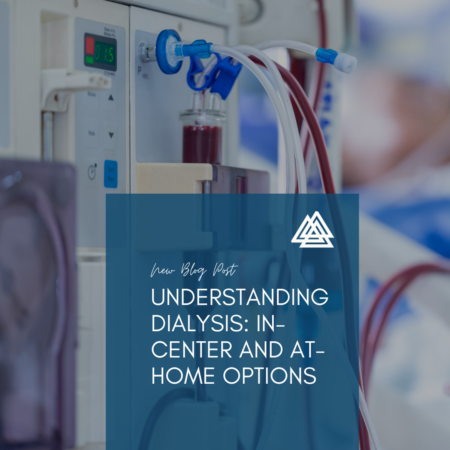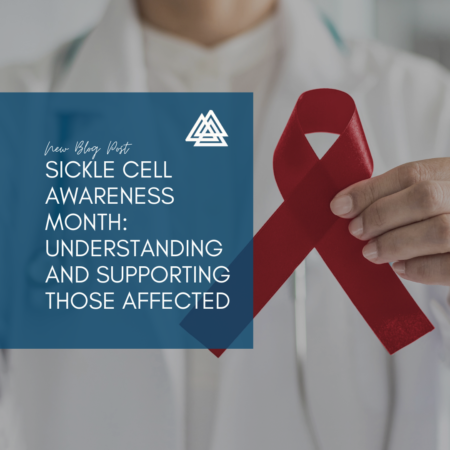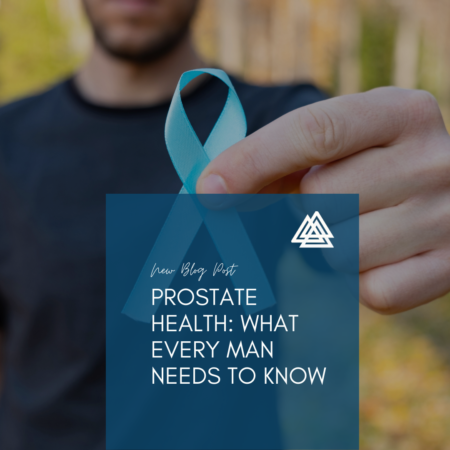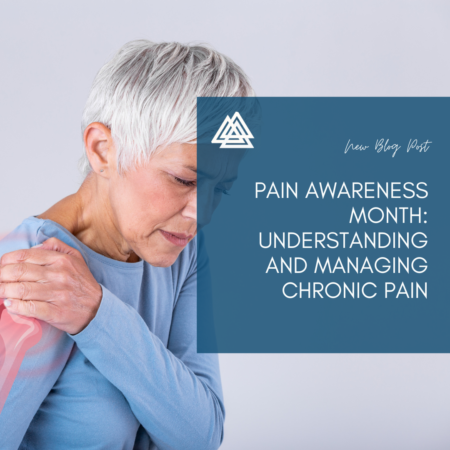Prism Post
 For individuals with kidney failure or severe chronic kidney disease (CKD), dialysis is a life-saving treatment that performs the vital functions of the kidneys, removing waste, excess fluids, and toxins from the blood. While dialysis is commonly associated with hospital or clinic settings, there are also options for receiving this treatment at home, offering greater flexibility and independence. In this blog post, we’ll explore what dialysis entails, when it’s necessary, and the different ways it can be administered, including the growing trend of home dialysis.
For individuals with kidney failure or severe chronic kidney disease (CKD), dialysis is a life-saving treatment that performs the vital functions of the kidneys, removing waste, excess fluids, and toxins from the blood. While dialysis is commonly associated with hospital or clinic settings, there are also options for receiving this treatment at home, offering greater flexibility and independence. In this blog post, we’ll explore what dialysis entails, when it’s necessary, and the different ways it can be administered, including the growing trend of home dialysis.
What is Dialysis?
Dialysis is a medical treatment used to replicate the kidney’s function when the kidneys are no longer able to do so on their own. It’s essential for individuals whose kidneys have lost 85-90% of their function, a condition often caused by chronic kidney disease, diabetes, high blood pressure, or other kidney-related disorders.
There are two main types of dialysis:
Hemodialysis: This is the most common form of dialysis, where blood is drawn out of the body and passed through a machine called a dialyzer, or artificial kidney. The dialyzer filters waste, excess fluids, and toxins from the blood before returning it to the body. Hemodialysis is typically performed in a hospital or dialysis center but can also be done at home.
Peritoneal Dialysis (PD): This type uses the lining of your abdomen, known as the peritoneum, as a natural filter. A cleansing fluid, called dialysate, is introduced into the abdomen through a catheter, where it absorbs waste products and excess fluids. The fluid is then drained from the body, carrying the waste with it. PD is usually done at home, offering a more flexible treatment option.
When is Dialysis Necessary?
Dialysis becomes necessary when a person’s kidneys are no longer able to effectively filter and clean the blood on their own. This stage of kidney failure is known as end-stage renal disease (ESRD). The decision to start dialysis is usually made when a person’s kidney function drops to 10-15% of normal, and they begin to experience symptoms such as:
- Severe fatigue
- Swelling in the legs, ankles, or feet
- Shortness of breath
- Nausea or vomiting
- Confusion or difficulty concentrating
In-Center Hemodialysis
For many patients, dialysis is performed at a dialysis center, where they typically undergo treatment three times a week for several hours per session. In-center hemodialysis provides access to trained healthcare professionals who monitor the treatment, manage any complications, and provide support.
While in-center dialysis offers a high level of medical oversight, it requires a strict schedule, with patients needing to travel to the center multiple times a week. This can be challenging for those with busy lives or limited mobility.
Home Dialysis: Flexibility and Independence
Home dialysis is an increasingly popular option for patients seeking greater control over their treatment schedule and environment. Both hemodialysis and peritoneal dialysis can be performed at home, offering several benefits:
- Home Hemodialysis (HHD): Patients who opt for home hemodialysis can perform their treatments more frequently, usually four to six times a week, but for shorter durations. This can lead to better overall health outcomes, as more frequent dialysis mimics the natural functioning of the kidneys more closely. With training and the support of a care partner, patients can safely manage their treatments at home, reducing the need for frequent trips to the clinic.
- Peritoneal Dialysis (PD): PD is typically done at home, either manually throughout the day (Continuous Ambulatory Peritoneal Dialysis, CAPD) or using a machine at night while you sleep (Automated Peritoneal Dialysis, APD). PD offers the most flexibility, allowing patients to maintain a more normal lifestyle, as it can be done without the need for needles and does not require travel to a dialysis center.
Advantages of Home Dialysis
- Greater Convenience: Home dialysis allows patients to schedule treatments around their lives, rather than the other way around. This flexibility can make it easier to maintain a job, care for family members, and participate in social activities.
- Improved Quality of Life: Many patients report feeling better on more frequent, shorter dialysis sessions, which can improve overall well-being and reduce symptoms like fatigue.
- Reduced Travel: Home dialysis eliminates the need for regular trips to a dialysis center, saving time and reducing the stress of transportation.
Challenges of Home Dialysis
While home dialysis offers many benefits, it’s not without its challenges:
- Training and Responsibility: Patients and their care partners must undergo extensive training to perform dialysis safely at home. This responsibility can be overwhelming for some.
- Space and Equipment: Home dialysis requires dedicated space for equipment and supplies, which can be a challenge in smaller living spaces.
- Support System: Having a strong support system is crucial, as home dialysis patients may need assistance from family members or friends.
Choosing the Right Option for You
Deciding between in-center and home dialysis is a personal choice that depends on your lifestyle, medical needs, and support system. Both options offer life-saving treatment, but home dialysis provides greater flexibility and independence for those who are up for the challenge. If you or a loved one is facing kidney failure, talk to your healthcare team about the options available and consider which dialysis method best fits your life.
No matter which option you choose, dialysis is a powerful tool that allows individuals with kidney failure to live full and active lives. By understanding your options and working closely with your healthcare team, you can manage your condition and continue to enjoy life on your terms.
 When I first heard the word “lymphedema,” it felt like a foreign language. I had never imagined that a simple swelling in my arm could lead to a lifelong condition that would change the way I live. But here I am, years later, sharing my story of life with lymphedema—a journey of resilience, frustration, adaptation, and hope.
When I first heard the word “lymphedema,” it felt like a foreign language. I had never imagined that a simple swelling in my arm could lead to a lifelong condition that would change the way I live. But here I am, years later, sharing my story of life with lymphedema—a journey of resilience, frustration, adaptation, and hope.
The Diagnosis: A Turning Point
It all started after my breast cancer surgery. I was so focused on beating cancer that I didn’t pay much attention to the swelling in my arm. I assumed it was just part of the healing process. But when the swelling didn’t go away and started to interfere with my daily activities, I knew something wasn’t right.
The diagnosis came like a punch in the gut. My doctor explained that I had developed lymphedema, a condition where lymph fluid accumulates in the tissues, causing swelling. It was a side effect of the surgery that removed my lymph nodes—a necessary procedure to fight cancer, but one that left me with this chronic condition. The words “chronic” and “no cure” echoed in my mind, and I felt a wave of fear and uncertainty wash over me.
Learning to Live with Lymphedema
Lymphedema isn’t just about swelling. It’s a constant, daily reminder that my life has changed. Simple tasks like carrying groceries, typing on a computer, or even getting dressed became challenges. My arm felt heavy, tight, and achy, and I was always conscious of protecting it from injury or infection.
Compression garments became my new best friend, but they were anything but comfortable. Wearing them felt like being squeezed into a too-tight sock all day long. And yet, I knew they were essential to manage the swelling and prevent it from getting worse. Physical therapy sessions became part of my routine, where I learned lymphatic drainage techniques and exercises to keep the fluid moving.
But it wasn’t just the physical aspects that were difficult—it was the emotional toll as well. I found myself mourning the loss of my old life, the carefree days when I didn’t have to think about every movement or plan my day around my condition. There were days when I felt angry and frustrated, asking, “Why me?” But I also knew that I couldn’t let lymphedema define me.
Finding Strength and Community
Over time, I started to adapt. I learned to listen to my body, to rest when I needed to, and to make modifications to my lifestyle that would help me manage my condition. I found strength in small victories, like successfully managing a day without a flare-up or finding a compression sleeve that was a little more comfortable.
One of the biggest sources of strength came from connecting with others who were also living with lymphedema. I joined a support group where I could share my experiences, learn from others, and feel understood in a way that only those who are going through the same thing can provide. Hearing stories of resilience and hope from others gave me the courage to keep going, even on the toughest days.
Embracing a New Normal
Living with lymphedema has taught me a lot about myself. I’ve learned that I am stronger and more resilient than I ever thought possible. I’ve learned the importance of self-care, not just physically, but emotionally and mentally as well. And I’ve learned that it’s okay to ask for help and to lean on others when I need it.
While lymphedema is now a part of my life, it doesn’t define me. I am more than my condition. I am a survivor, a fighter, and a person who has learned to adapt and thrive despite the challenges. I’ve come to accept that this is my new normal, and while it’s not the life I had before, it’s still a life full of possibilities, joy, and hope.
Moving Forward with Hope
I won’t pretend that living with lymphedema is easy. There are still days when I feel overwhelmed or frustrated. But I’ve also learned that I have the strength to face whatever comes my way. I’ve found ways to manage my condition, to live a full and meaningful life, and to embrace the future with hope.
To anyone else living with lymphedema, or any chronic condition, I want you to know that you are not alone. It’s okay to feel what you’re feeling, to have good days and bad days, and to take things one step at a time. We may not have chosen this journey, but we have the power to choose how we walk it—with resilience, strength, and hope for the future.
If you are living with lymphedema and are in need of Coverage, Product Access, Education and Support, please reach out here.
 September is Gynecologic Cancer Awareness Month, a time dedicated to raising awareness about the cancers that affect women’s reproductive organs. These cancers include cervical, ovarian, uterine, vaginal, and vulvar cancers. Understanding the risks, symptoms, and preventive measures associated with gynecologic cancers is crucial for early detection and treatment.
September is Gynecologic Cancer Awareness Month, a time dedicated to raising awareness about the cancers that affect women’s reproductive organs. These cancers include cervical, ovarian, uterine, vaginal, and vulvar cancers. Understanding the risks, symptoms, and preventive measures associated with gynecologic cancers is crucial for early detection and treatment.
Types of Gynecologic Cancers
There are five main types of gynecologic cancers, each affecting different parts of the reproductive system:
Cervical Cancer: This cancer begins in the cervix, the lower part of the uterus that connects to the vagina. It is often caused by the human papillomavirus (HPV), a common sexually transmitted infection. Regular Pap smears and HPV testing can help detect cervical cancer early when it is most treatable.
Ovarian Cancer: Ovarian cancer affects the ovaries, which produce eggs and hormones. It is often called the “silent killer” because its symptoms are vague and can be easily overlooked. Symptoms may include bloating, pelvic pain, and changes in appetite. Unfortunately, ovarian cancer is often diagnosed at an advanced stage, making it more difficult to treat.
Uterine (Endometrial) Cancer: This cancer begins in the lining of the uterus, known as the endometrium. It is the most common gynecologic cancer in the United States. Symptoms include abnormal vaginal bleeding, pelvic pain, and pain during intercourse. Early detection through regular gynecologic exams is important for effective treatment.
Vaginal Cancer: Vaginal cancer is rare and occurs in the vagina, the canal leading from the cervix to the outside of the body. Symptoms can include abnormal vaginal bleeding, pain during intercourse, and a lump or mass in the vagina. Regular gynecologic check-ups can help in early detection.
Vulvar Cancer: Vulvar cancer occurs on the outer surface area of the female genitalia. It is also rare and can cause symptoms like itching, burning, pain, and changes in the skin color or texture of the vulva. Regular self-exams and awareness of changes in the vulva can aid in early detection.
Risk Factors and Symptoms
Several risk factors can increase a woman’s likelihood of developing gynecologic cancers, including:
- Age: The risk of gynecologic cancers increases with age.
- Family History: A family history of gynecologic or other cancers can elevate risk.
- HPV Infection: Particularly relevant for cervical cancer, HPV infection is a major risk factor.
- Obesity: Excess weight is associated with an increased risk of uterine cancer.
- Smoking: Smoking is linked to an increased risk of cervical and vulvar cancers.
Common symptoms of gynecologic cancers may include:
- Abnormal vaginal bleeding or discharge
- Pelvic pain or pressure
- Pain during intercourse
- Unexplained weight loss or changes in appetite
- Persistent bloating or abdominal discomfort
It’s important to note that these symptoms can be associated with conditions other than cancer, but it’s essential to consult a healthcare provider if any of these symptoms persist.
Prevention and Early Detection
Prevention and early detection are key to combating gynecologic cancers. Here are some steps to take:
- Regular Screenings: Pap smears and HPV tests are essential tools for detecting cervical cancer early. Women should follow their healthcare provider’s recommendations for screening schedules.
- HPV Vaccination: The HPV vaccine can significantly reduce the risk of cervical cancer and other HPV-related cancers. It is most effective when given before an individual becomes sexually active.
- Healthy Lifestyle: Maintaining a healthy weight, eating a balanced diet, and staying physically active can help reduce the risk of some gynecologic cancers. Avoiding smoking and limiting alcohol intake are also important preventive measures.
- Know Your Family History: Understanding your family’s medical history can help you and your healthcare provider assess your risk for gynecologic cancers. If you have a family history of cancer, you may benefit from genetic counseling and testing.
- Be Aware of Changes: Pay attention to your body and be aware of any unusual changes or symptoms. Early detection is crucial for successful treatment, so don’t hesitate to seek medical advice if you notice anything concerning.
Gynecologic Cancer Awareness Month is an important opportunity to educate ourselves and others about the risks, symptoms, and preventive measures associated with gynecologic cancers. By staying informed and proactive about our health, we can improve early detection and outcomes for women affected by these cancers. If you have any concerns about your risk for gynecologic cancer, speak with your healthcare provider and schedule regular check-ups to ensure your reproductive health is well cared for.
 September is Sickle Cell Awareness Month, a time dedicated to increasing awareness about sickle cell disease (SCD) and supporting those affected by this serious genetic condition. Sickle cell disease impacts millions of people worldwide, particularly in communities of African, Mediterranean, Middle Eastern, and Indian descent. Understanding the challenges of SCD and the importance of early diagnosis and treatment can make a significant difference in the lives of those affected.
September is Sickle Cell Awareness Month, a time dedicated to increasing awareness about sickle cell disease (SCD) and supporting those affected by this serious genetic condition. Sickle cell disease impacts millions of people worldwide, particularly in communities of African, Mediterranean, Middle Eastern, and Indian descent. Understanding the challenges of SCD and the importance of early diagnosis and treatment can make a significant difference in the lives of those affected.
What is Sickle Cell Disease?
Sickle cell disease is a group of inherited blood disorders characterized by the presence of abnormal hemoglobin, known as hemoglobin S. This abnormal hemoglobin causes red blood cells to become rigid, sticky, and crescent-shaped (like a sickle), rather than the normal, flexible, disc shape. These sickle-shaped cells can block blood flow in blood vessels, leading to painful episodes, known as sickle cell crises, and other serious complications.
Some of the key complications of SCD include:
- Painful Crises: Sickle cell crises are sudden episodes of severe pain caused by blocked blood flow. These episodes can occur in any part of the body and often require medical attention.
- Anemia: Sickle cells break down prematurely, leading to a shortage of healthy red blood cells (anemia). This can cause fatigue, weakness, and delayed growth in children.
- Infections: People with SCD are more vulnerable to infections due to damage to the spleen, an organ that helps fight infections.
- Stroke: Blocked blood flow to the brain can result in a stroke, a serious and potentially life-threatening complication of SCD.
- Organ Damage: Over time, the repeated blockage of blood flow can cause damage to organs such as the liver, kidneys, lungs, and heart.
Raising Awareness and Supporting Research
Sickle Cell Awareness Month is an opportunity to educate the public about SCD and advocate for better care and treatment options. Despite significant advancements in treatment, many individuals with SCD still face challenges in accessing adequate healthcare and managing their condition.
Research is critical in improving the lives of those with SCD. Ongoing studies are focused on developing new treatments, such as gene therapy, that could offer a potential cure for the disease. The Sickle Cell Disease Association of America (SCDAA) emphasizes the importance of supporting research efforts: “Continued research and clinical trials are vital to finding a cure and improving the quality of life for those living with sickle cell disease.”
How You Can Help
There are several ways to support individuals with SCD and contribute to the fight against the disease:
- Educate Yourself and Others: Learn more about SCD and share information with your community. Raising awareness helps reduce stigma and promotes understanding of the challenges faced by those with the disease.
- Donate Blood: People with SCD often require blood transfusions as part of their treatment. Donating blood is a simple way to make a significant impact on the lives of those with SCD.
- Support Research: Consider donating to organizations that fund SCD research. Your contributions can help advance treatments and move closer to a cure.
- Advocate for Better Healthcare: Encourage policymakers to prioritize funding for SCD research and ensure that individuals with the disease have access to the care and support they need.
- Join or Support Support Groups: Support groups offer a sense of community and shared experiences for individuals and families affected by SCD. Participating in or supporting these groups can provide valuable resources and emotional support.
Sickle Cell Awareness Month is a time to come together to support those affected by this challenging condition. By raising awareness, supporting research, and advocating for better healthcare, we can make a meaningful difference in the lives of individuals with SCD. Whether through education, donation, or advocacy, every effort counts in the fight against sickle cell disease. Together, we can work towards a future where SCD is better understood, better managed, and, ultimately, cured.
 The day I was first told I needed an ostomy was a whirlwind of emotions. I had been battling severe gastrointestinal issues for months, and nothing seemed to be working. The doctors explained that an ostomy would give me the chance to regain some quality of life. As I began to wrap my head around the reality of living with an ostomy, one of the first decisions I faced was choosing between a one-piece and a two-piece ostomy system. What seemed like a small choice at first quickly became a significant aspect of my new life.
The day I was first told I needed an ostomy was a whirlwind of emotions. I had been battling severe gastrointestinal issues for months, and nothing seemed to be working. The doctors explained that an ostomy would give me the chance to regain some quality of life. As I began to wrap my head around the reality of living with an ostomy, one of the first decisions I faced was choosing between a one-piece and a two-piece ostomy system. What seemed like a small choice at first quickly became a significant aspect of my new life.
The News: A Life-Changing Diagnosis
I still remember the moment the surgeon explained the need for an ostomy. It was like a heavy fog settled over me. I had heard the term before, but I didn’t fully understand what it meant for me. I was overwhelmed by a flood of questions and fears. How would this change my life? How would I manage? Would I be able to feel like myself again?
The team provided me with information on the different types of ostomy systems, including the one-piece and two-piece options. I listened intently but felt lost in a sea of medical jargon and technical details.
The One-Piece System: Simplicity at Its Best
As I delved into the world of ostomy supplies, the one-piece system seemed straightforward and user-friendly. In a one-piece system, the pouch and the adhesive barrier are combined into a single unit. The simplicity of this design appealed to me for several reasons:
- Ease of Use: The one-piece system is easy to apply and remove. With fewer parts, it seemed like a good option for someone who might struggle with complex procedures, especially during the initial adjustment period.
- Less Leakage: I was reassured that the integrated design might reduce the risk of leaks since there’s no seam where two parts join.
- Discreet Appearance: The one-piece system is generally more streamlined and less bulky, which was important to me as I thought about wearing it under my clothes.
However, I also had concerns. Changing the entire system regularly could be time-consuming, and I wondered if the single unit would be less flexible in terms of adjusting to my body’s needs.
The Two-Piece System: Flexibility and Customization
The two-piece system, on the other hand, involves a separate adhesive barrier and a detachable pouch. The barrier adheres to the skin, and the pouch snaps onto it. The flexibility of this system intrigued me:
- Interchangeability: The ability to change the pouch without removing the barrier was a significant advantage. It meant fewer changes of the entire system, which I found appealing.
- Customization: With separate components, I could potentially switch out pouches based on my activities or needs without disturbing the adhesive barrier. This seemed useful for maintaining comfort and addressing any skin issues.
- Long-Term Cost: While the initial cost might be higher due to the need for both barriers and pouches, I considered that over time, it might be more economical if I didn’t need to replace the entire system as frequently.
But the two-piece system also had its drawbacks. The additional step of snapping the pouch onto the barrier required careful alignment, which felt daunting. I worried about potential leakage at the junction between the two parts.
Navigating My Choice: Seeking Advice and Testing Options
I knew I needed more than just brochures and technical descriptions. I reached out to my ostomy nurse and joined online support groups to hear firsthand experiences from others. Their advice was invaluable. They shared their personal stories and helped me understand how each system worked in real life.
In my quest for the right choice, I decided to try samples of both systems. The trial period was eye-opening. I learned a lot about how each system felt and performed in my daily routine. I discovered that comfort, ease of use, and how each system integrated with my lifestyle were crucial factors for me.
Making the Decision: Finding What Works Best
Ultimately, I chose the two-piece system. The flexibility and ease of pouch changes fit better with my lifestyle, and the ability to customize the system to my needs was appealing. It was a personal decision, and I felt confident knowing that this option offered me greater control over my ostomy care.
Embracing My New Normal
Becoming a new ostomy patient was a challenging transition, but making informed choices about my ostomy system helped me feel more in control. With the right support and guidance, I was able to adapt and embrace my new normal. I now focus on living my life fully, rather than letting my ostomy define it.
If you’re facing a similar decision, remember that the choice between a one-piece and a two-piece system is deeply personal. What works for one person might not work for another, and that’s okay. Take the time to explore your options, seek advice from healthcare professionals and fellow ostomy patients, and choose what feels right for you.
Living with an ostomy has its challenges, but it’s also a journey of discovery and resilience. With the right support and a well-suited system, you can navigate this new chapter of your life with confidence and hope.
 Prostate health is a vital aspect of men’s health, yet it is often overlooked until problems arise. The prostate, a small gland located just below the bladder, plays a crucial role in the male reproductive system by producing seminal fluid. As men age, the risk of prostate-related issues increases, making it essential to understand and prioritize prostate health.
Prostate health is a vital aspect of men’s health, yet it is often overlooked until problems arise. The prostate, a small gland located just below the bladder, plays a crucial role in the male reproductive system by producing seminal fluid. As men age, the risk of prostate-related issues increases, making it essential to understand and prioritize prostate health.
Common Prostate Issues
There are several common prostate conditions that men should be aware of:
Benign Prostatic Hyperplasia (BPH): BPH is a non-cancerous enlargement of the prostate that is common in older men. As the prostate enlarges, it can press against the urethra, leading to symptoms such as frequent urination, difficulty starting urination, and a weak urine stream. While BPH is not life-threatening, it can significantly impact the quality of life if left untreated.
Prostatitis: Prostatitis is an inflammation of the prostate that can cause pain, discomfort, and urinary problems. It can be caused by a bacterial infection or other factors, and it may be acute (sudden onset) or chronic (long-lasting). Symptoms of prostatitis include pelvic pain, painful urination, and flu-like symptoms.
Prostate Cancer: Prostate cancer is one of the most common cancers in men. It often develops slowly and may not cause noticeable symptoms in its early stages. However, advanced prostate cancer can lead to urinary problems, erectile dysfunction, and pain in the hips, back, or chest. Early detection is key to successful treatment, making regular screenings important.
Maintaining Prostate Health
Taking proactive steps to maintain prostate health can reduce the risk of developing prostate-related issues. Here are some tips:
- Regular Screenings: Prostate screenings, including the prostate-specific antigen (PSA) blood test and digital rectal exam (DRE), are essential for early detection of prostate problems. The American Cancer Society recommends that men discuss the risks and benefits of prostate cancer screening with their healthcare provider starting at age 50, or earlier if they have a family history of prostate cancer.
- Healthy Diet: A balanced diet rich in fruits, vegetables, whole grains, and lean proteins can support prostate health. Some studies suggest that foods high in antioxidants, such as tomatoes (which contain lycopene), may help protect the prostate. Limiting red meat, processed foods, and high-fat dairy products is also advisable.
- Stay Active: Regular physical activity can improve overall health and may reduce the risk of prostate problems. Exercise helps maintain a healthy weight, improves circulation, and supports immune function. Aim for at least 150 minutes of moderate-intensity aerobic activity each week, along with strength training exercises.
- Manage Stress: Chronic stress can negatively affect prostate health. Stress management techniques, such as mindfulness, meditation, and deep breathing exercises, can help reduce stress levels and promote overall well-being.
- Limit Alcohol and Tobacco: Excessive alcohol consumption and smoking are linked to an increased risk of prostate problems, including prostate cancer. Limiting alcohol intake and avoiding tobacco can help protect prostate health and reduce the risk of other health issues.
Prostate health is an important aspect of men’s health that deserves attention throughout life. By staying informed, adopting a healthy lifestyle, and getting regular screenings, men can take proactive steps to maintain their prostate health and reduce the risk of serious conditions. Remember, early detection and prevention are key to ensuring a healthy prostate and a better quality of life. If you have any concerns about your prostate health, don’t hesitate to talk to your healthcare provider.
 Every September, Pain Awareness Month is observed to shed light on the challenges faced by individuals living with chronic pain. This month serves as a reminder of the importance of pain management, advocacy, and education, aiming to improve the quality of life for those affected.
Every September, Pain Awareness Month is observed to shed light on the challenges faced by individuals living with chronic pain. This month serves as a reminder of the importance of pain management, advocacy, and education, aiming to improve the quality of life for those affected.
Understanding Chronic Pain
Chronic pain is a complex condition that persists for weeks, months, or even years. Unlike acute pain, which is a direct response to injury or illness and typically resolves as the body heals, chronic pain can persist even after the initial cause has been treated. It can affect any part of the body and may manifest as headaches, back pain, arthritis, or neuropathic pain, among other forms.
The impact of chronic pain extends beyond physical discomfort. It can lead to emotional distress, depression, anxiety, and a decrease in overall quality of life. According to the American Chronic Pain Association, “Chronic pain is not just a symptom, but a condition in its own right, requiring comprehensive management strategies.”
The Importance of Pain Awareness
Pain Awareness Month highlights the need for greater understanding and empathy toward those living with chronic pain. Many people with chronic pain feel isolated or misunderstood, as their condition is often invisible to others. Raising awareness can help reduce the stigma and encourage more open conversations about pain and its effects.
This month also emphasizes the importance of access to effective pain management. The International Association for the Study of Pain (IASP) states, “Access to pain management is a fundamental human right, and improving pain care is a global priority.”
Managing Chronic Pain: Strategies and Resources
Effective pain management often requires a multidisciplinary approach tailored to the individual’s needs. Here are some common strategies:
- Medications: Over-the-counter pain relievers, prescription medications, and topical treatments can help manage pain. However, it’s important to use medications as directed and consult with a healthcare provider to find the most appropriate options.
- Physical Therapy: Regular physical activity and targeted exercises can improve mobility, strengthen muscles, and reduce pain. Physical therapists can design personalized exercise programs that accommodate specific pain conditions.
- Mind-Body Techniques: Practices such as mindfulness, meditation, and relaxation exercises can help manage pain by reducing stress and promoting relaxation. These techniques can be particularly effective in managing the emotional aspects of chronic pain.
- Alternative Therapies: Acupuncture, massage, and chiropractic care are examples of alternative therapies that some people find beneficial in managing chronic pain. While these therapies may not work for everyone, they can be valuable components of a comprehensive pain management plan.
- Support Groups and Counseling: Emotional support is crucial for those living with chronic pain. Support groups and counseling can provide a sense of community, reduce feelings of isolation, and offer coping strategies for managing pain.
Pain Awareness Month is an opportunity to deepen our understanding of chronic pain and advocate for better pain management resources. By raising awareness, supporting research, and promoting effective pain management strategies, we can help improve the lives of those affected by chronic pain. Whether you are living with chronic pain or supporting someone who is, remember that you are not alone, and there are resources available to help you navigate this journey.
 As summer’s warmth begins to wane and the crisp air of fall starts to set in, many of us find ourselves transitioning not just in terms of weather but in our mental and emotional well-being. The shift from summer to fall brings a change in routines, shorter days, and varying light levels, all of which can impact our mental health. Understanding and addressing these changes can help ensure a smooth transition and promote overall well-being.
As summer’s warmth begins to wane and the crisp air of fall starts to set in, many of us find ourselves transitioning not just in terms of weather but in our mental and emotional well-being. The shift from summer to fall brings a change in routines, shorter days, and varying light levels, all of which can impact our mental health. Understanding and addressing these changes can help ensure a smooth transition and promote overall well-being.
The Seasonal Shift: What to Expect
With the transition from summer to fall, several changes occur that can influence mental health:
- Reduced Daylight: The decrease in daylight hours can affect your mood and energy levels. Many people experience what is known as Seasonal Affective Disorder (SAD), a type of depression that occurs at certain times of the year, often starting in the fall and continuing into the winter.
- Change in Routine: As summer vacations end and school starts, routines shift. This transition can create stress or anxiety, especially for families or individuals who thrive on a structured routine.
- Temperature Fluctuations: The cooler temperatures of fall can be a welcome relief from summer’s heat, but they can also lead to a period of adjustment. The drop in temperature can affect physical comfort, which can, in turn, impact mental well-being.
Recognizing and Addressing Seasonal Affective Disorder (SAD)
SAD is a form of depression that typically occurs during the fall and winter months when there is less natural sunlight. Symptoms may include:
- Persistent feelings of sadness or hopelessness
- Loss of interest in activities once enjoyed
- Changes in appetite or weight
- Difficulty concentrating
- Low energy levels or fatigue
If you notice these symptoms in yourself or someone else, it’s important to seek help. Treatment options for SAD include:
- Light Therapy: Using a light box that mimics natural sunlight can help regulate your body’s internal clock and improve mood.
- Counseling: Talking to a mental health professional can provide support and coping strategies.
- Medication: In some cases, antidepressants may be prescribed to help manage symptoms.
Embracing the Fall Transition: Tips for Mental Wellness
The shift from summer to fall can be a time of renewal and reflection. Here are some tips to help manage mental health during this transition:
- Stay Active: Exercise has been shown to boost mood and reduce symptoms of depression. As the weather cools, find activities you enjoy, whether it’s hiking in nature, joining a fall sports league, or trying out a new fitness class.
- Get Outside: Take advantage of the fall weather by spending time outside. Natural light and fresh air can help regulate your sleep patterns and improve your mood.
- Maintain a Routine: Establishing a consistent daily routine can provide structure and stability. This can be especially helpful as you transition from the relaxed pace of summer to the more structured fall schedule.
- Practice Mindfulness: Fall is a great time to focus on mindfulness and self-care. Practices such as meditation, yoga, or journaling can help manage stress and promote mental well-being.
- Connect with Others: Social connections are crucial for mental health. As the days get shorter, make an effort to stay connected with friends and family, whether through regular phone calls, virtual hangouts, or safe in-person gatherings.
- Prepare for the Winter Months: As fall progresses, start preparing for winter. This might include adjusting your home environment, seeking out light therapy options, or planning activities that will keep you engaged and positive during the darker months.
Seeking Professional Help
If you find that the transition from summer to fall is significantly impacting your mental health, don’t hesitate to seek professional help. A mental health professional can provide guidance, support, and treatment options tailored to your needs.
Embracing the Season
Fall offers its own unique beauty and opportunities for growth. Embrace the changing season by focusing on what you can control and finding ways to make the most of this time of year. By acknowledging the impact of seasonal changes on mental health and taking proactive steps, you can navigate the transition with greater ease and resilience.
As summer fades into fall, remember that you’re not alone in experiencing these shifts. By staying mindful of your mental health and making self-care a priority, you can welcome the new season with a sense of renewal and well-being.
 Aging is a natural part of life, but the way we age can vary significantly depending on our lifestyle choices. Healthy aging is about maintaining your physical and mental health, staying active, and enjoying a high quality of life as you grow older. Below are some key tips and insights on how to age gracefully and healthily.
Aging is a natural part of life, but the way we age can vary significantly depending on our lifestyle choices. Healthy aging is about maintaining your physical and mental health, staying active, and enjoying a high quality of life as you grow older. Below are some key tips and insights on how to age gracefully and healthily.
Prioritize Nutrition
Eating a balanced diet rich in fruits, vegetables, lean proteins, and whole grains is crucial for healthy aging. Proper nutrition helps prevent chronic diseases, boosts immunity, and maintains energy levels. Dr. Walter Willett, a professor of epidemiology and nutrition at Harvard T.H. Chan School of Public Health, emphasizes, “What you eat can have a dramatic impact on your health, and good nutrition is a cornerstone of healthy aging.”
Stay Physically Active
Regular physical activity is essential for maintaining strength, flexibility, and cardiovascular health as we age. It can also help manage weight, reduce the risk of chronic diseases, and improve mental health. The Centers for Disease Control and Prevention (CDC) recommends at least 150 minutes of moderate-intensity aerobic activity, such as brisk walking, per week for older adults. According to the CDC, “Regular physical activity is one of the most important things you can do for your health.”
Mental Well-Being Matters
Mental health is just as important as physical health. Engaging in activities that challenge the brain, such as puzzles, reading, or learning new skills, can help maintain cognitive function. Social connections are also vital. According to a study published in the Journal of Health and Social Behavior, “Older adults who maintain strong social networks and engage in meaningful social activities have better mental health and a lower risk of cognitive decline.”
Preventive Healthcare
Regular check-ups and preventive care are key components of healthy aging. Screening tests, vaccinations, and routine medical exams can catch potential health issues early, when they are most treatable. The National Institute on Aging advises, “Preventive healthcare is essential to maintaining health and quality of life as we age.”
Prioritize Sleep
Quality sleep is vital for healthy aging, as it helps the body repair and rejuvenate. Poor sleep is linked to a higher risk of various health problems, including heart disease, obesity, and cognitive decline. The Sleep Foundation notes, “As we age, getting enough sleep becomes more challenging, but it’s essential for overall health and well-being.”
Healthy aging is within reach for everyone. By prioritizing nutrition, staying active, maintaining mental well-being, engaging in preventive healthcare, and ensuring quality sleep, you can enjoy a vibrant and fulfilling life well into your later years. Remember, aging is a journey, and the choices you make today can greatly influence how you age tomorrow.
 Ensuring the safety of your baby is a top priority for every parent and caregiver. Babies are naturally curious and vulnerable, making it essential to create a safe environment where they can explore and grow. From the nursery to the car, here are some key tips to help you keep your little one safe at all times.
Ensuring the safety of your baby is a top priority for every parent and caregiver. Babies are naturally curious and vulnerable, making it essential to create a safe environment where they can explore and grow. From the nursery to the car, here are some key tips to help you keep your little one safe at all times.
- Safe Sleep Practices
Sleep safety is crucial for preventing sudden infant death syndrome (SIDS) and other sleep-related incidents. To ensure your baby sleeps safely:
- Place your baby on their back: Always put your baby to sleep on their back, as this position reduces the risk of SIDS.
- Use a firm mattress: Ensure your baby’s crib has a firm mattress covered with a fitted sheet. Avoid using soft bedding, pillows, or stuffed animals in the crib, as they can pose suffocation hazards.
- Keep the crib bare: The safest sleep environment is a bare crib with just a fitted sheet. Avoid placing any loose items or toys in the crib.
- Share a room, not a bed: It’s recommended to keep your baby’s crib in your room for the first six months, but avoid bed-sharing, as it increases the risk of suffocation and SIDS.
- Car Seat Safety
Car seats are essential for protecting your baby during travel, but they must be used correctly to be effective:
- Use the right car seat: Choose a car seat that’s appropriate for your baby’s age, weight, and height. Infants should be placed in a rear-facing car seat until at least age two or until they reach the highest weight or height allowed by the car seat manufacturer.
- Install the car seat correctly: Follow the manufacturer’s instructions carefully when installing the car seat. Make sure the seat is securely fastened, and the harness fits snugly over your baby’s shoulders and chest.
- Avoid bulky clothing: When strapping your baby into the car seat, avoid using bulky clothing or blankets, as they can interfere with the harness. Instead, dress your baby in thin layers and use a blanket over the harness if needed.
- Home Safety
Your home should be a safe space for your baby to explore. Here are some tips to baby-proof your home:
- Install safety gates: Use safety gates to block off stairs and other hazardous areas. Make sure the gates are securely mounted and cannot be easily dislodged by your baby.
- Secure furniture: Anchor heavy furniture, such as bookshelves and dressers, to the wall to prevent tipping. Keep sharp objects, small items, and cords out of your baby’s reach.
- Use outlet covers: Place outlet covers on all unused electrical outlets to prevent your baby from sticking fingers or objects into them.
- Check for choking hazards: Regularly inspect your home for small items that could pose a choking risk, such as coins, buttons, and small toys. Keep these items out of your baby’s reach.
- Bath Time Safety
Bath time can be fun, but it’s important to be vigilant to prevent accidents:
- Never leave your baby unattended: Even for a moment, never leave your baby alone in the bath. Drowning can happen quickly and silently, even in shallow water.
- Check water temperature: Make sure the bathwater is warm, not hot. Test the water with your wrist or elbow to ensure it’s a safe temperature for your baby.
- Use non-slip mats: Place non-slip mats in the bathtub and on the bathroom floor to prevent slipping.
- Toys and Playtime Safety
Toys are an essential part of your baby’s development, but they should be safe and age-appropriate:
- Choose age-appropriate toys: Always select toys that are suitable for your baby’s age and developmental stage. Avoid toys with small parts, sharp edges, or strings that could pose choking or strangulation hazards.
- Regularly inspect toys: Check your baby’s toys regularly for wear and tear. Discard any broken or damaged toys to prevent injuries.
- Supervise playtime: Always supervise your baby during playtime, especially when they are playing with new toys or in unfamiliar environments.
Baby safety is all about being proactive and vigilant. By following these essential safety tips, you can create a secure environment where your baby can thrive. Remember, accidents can happen in an instant, so staying informed and prepared is key to keeping your little one safe. Whether at home, on the road, or at play, taking these precautions will help ensure your baby’s safety and well-being.
